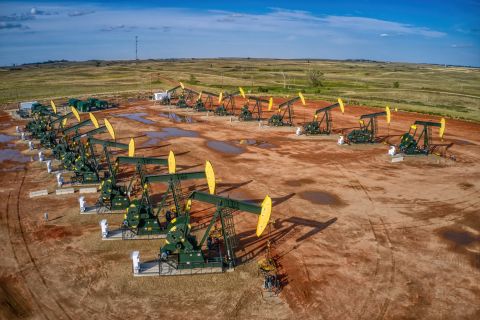DNV GL proposed the Probabilistic Digital Twin (PDT) to close the gap between digital twins—used increasingly by operators to manage the performance of their assets—and risk analysis still largely conducted manually before assets enter service.
The Probabilistic Digital Twin concept was unveiled at Offshore Europe 2019 on Sept. 5 by Dr. Frank Børre Pedersen, program director oil & gas at DNV GL’s Group Technology and Research unit and senior research scientist Dr. Andreas Hafver.
A digital twin is a digital “mirror” of a physical asset, including models of its structure and dynamics which are updated through a combination of multiple data sources. They bring significant benefits for data management and decision making, providing a consistent, accurate single source of information.
Risk models are rarely brought forward into operations—they typically exist separately within engineering, operations and health and safety disciplines—and are mostly used in desk studies, based on analyzing historical data and offering only a static picture of potential risks.
In reality, risk is dynamic, varying in time with operational conditions and the condition of the asset, but this is not captured by current risk models which are seldom updated and lack real-time and prediction capabilities.
“Our proposed Probabilistic Digital Twin is designed to bring risk analysis into ‘live’ use. Their creation would add a layer of probabilistic risk modelling to existing digital twins, capturing uncertainty, the effect of new knowledge and actual conditions on operational performance and safety.,” Liv A. Hovem, CEO, DNV GL - Oil & Gas, said.
“By providing a more up-to-date and asset-specific risk picture, a PDT allows operators to adjust operations or take preventive actions to maintain an acceptable risk level at all times. This will enhance safety and reduce expensive downtime,” she added.
A PDT may include reliability and degradation models to predict the remaining lifetime of mechanical components. However, it is more than a predictive maintenance tool. Risk is not only about component failures, but also about exposure to hazards and how the asset is operated. A PDT can say something about the overall impact on safety, by combining reliability models with models of the hazard exposure and the consequences if something goes wrong.
Recommended Reading
Marketed: EnCore Permian Holdings 17 Asset Packages
2024-03-05 - EnCore Permian Holdings LP has retained EnergyNet for the sale of 17 asset packages available on EnergyNet's platform.
Marketed: Foundation Energy 162 Well Package in Permian Basin
2024-04-12 - Foundation Energy Fund V-A has retained EnergyNet for the sale of a 162 Permian Basin opportunity well package in Eddy and Lea counties, New Mexico and Howard County, Texas.
Elk Range Royalties Makes Entry in Appalachia with Three-state Deal
2024-03-28 - NGP-backed Elk Range Royalties signed its first deal for mineral and royalty interests in Appalachia, including locations in Pennsylvania, Ohio and West Virginia.
Sitio Royalties Dives Deeper in D-J with $150MM Acquisition
2024-02-29 - Sitio Royalties is deepening its roots in the D-J Basin with a $150 million acquisition—citing regulatory certainty over future development activity in Colorado.
Is Grayson Mill the Next Bakken Domino to Fall After Chevron-Hess?
2024-01-31 - As E&Ps look to bulk up outside of the Permian Basin, EnCap-backed Bakken player Grayson Mill Energy is reportedly exploring a sale valued around $5 billion.



